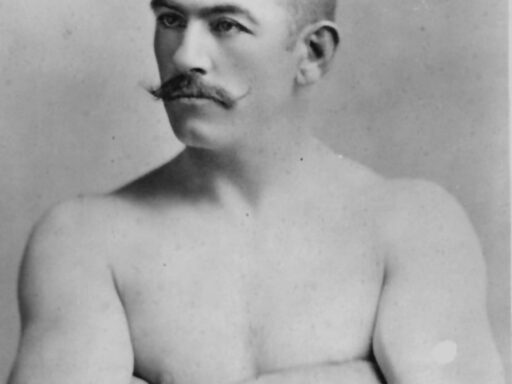The 1968 song “Harper Valley P.T.A.” reflects real social dynamics where Parent Teacher Associations often policed the morals and behaviors of women in their communities, though not necessarily through formal letters accusing non-member mothers. This portrayal is partly poetic license but rooted in factual community practices.
“Harper Valley P.T.A.” tells the story of Mrs. Johnson, who receives a letter from the PTA criticizing her for wearing short skirts and other “unmotherly” behavior. Although she was not a PTA member, the song captures how PTA members often extended their scrutiny beyond their ranks, aiming to uphold community standards.
Historically, PTAs served as social hubs for mothers within specific demographic groups. These groups bonded and often monitored each other. White middle-class women, who predominantly made up the PTA membership, sometimes judged other women in their community, especially those outside the PTA.
Such moral policing was tied less to individual faults and more to concerns about community reputation. PTA members worried about the image their schools projected to outsiders. They feared that private behaviors would affect how the entire community was viewed, linking a mother’s conduct to the school’s standing.
While national and state PTA bylaws forbade interference in core school business, the PTAs considered “community matters” within their scope. This broad interpretation allowed them to comment on social standards, including dress, behavior, and parenting outside the school walls.
Some PTAs explicitly aimed to “raise the standards of home life,” which legitimized practices like letter writing to express disapproval. In these cases, letters or other forms of communication might have been routine for addressing local moral standards.
Thus, the letter in the song is likely an artistic exaggeration but grounded in real patterns of judgment and control exercised by PTAs. It highlights how these associations functioned as moral gatekeepers in mid-20th century American communities.
- PTAs policed community morals, often beyond their membership.
- Concerns centered on community image and school reputation.
- PTA bylaws allowed addressing social standards indirectly.
- Letter writing was possible, especially in PTAs focused on home life.
- The song’s depiction mixes fact with artistic license for storytelling.
Harper Valley P.T.A.: Poetic License or Historical Reality?
At first glance, the 1968 hit “Harper Valley P.T.A.” seems like a classic example of poetic license. After all, the song tells a juicy tale: a mysterious letter from the local Parent Teacher Association condemning Mrs. Johnson’s short skirts and “unmotherly” antics. But is this just a catchy country tune’s wild imagination, or did real PTAs truly police the morals of community women like this?
Let’s get right to it: It’s a bit of both. While the direct story of Mrs. Johnson — not even a PTA member — getting a scolding letter may be dramatized for storytelling, the scenario reflects authentic social dynamics in many communities in mid-20th century America.
Early PTAs: More Than Just Bake Sales and Fundraisers
The PTA’s roots stretch back to the early 1900s. It grew from women-led activism during the progressive era, starting as the National Congress of Mothers before becoming the National Congress of Parents and Teachers. Fascinatingly, the National Congress of Colored Parents and Teachers emerged alongside it, reflecting separate but similar struggles in African American communities. The national organization only became integrated in 1970.
While today’s PTA might conjure images of mostly white, middle-class parents, the organization has historically included members from a variety of racial and socioeconomic backgrounds. Yet, in the 1960s — when “Harper Valley P.T.A.” hit the charts — the dominant image was indeed of white, suburban mothers forming tight-knit social networks.
Policing Morals Behind Closed PTA Doors
Here’s where the song’s depiction gains a ring of truth. Historian Christine Woyshner highlights the PTA’s role in building “social capital”—a fancy way to say it knit communities by bridging social, racial, and class gaps to support schools. On one hand, PTA meetings were spaces to improve school life, but on the other, they fostered strong bonds within certain demographic groups.
And with bonding came policing. It’s akin to any close-knit group where behavior and appearance get scrutinized. Members of the dominant demographic—often white, middle-class mothers—sometimes watched each other’s conduct closely. Judging how “proper” a mother was might mean watching skirt lengths, chaperoning, or criticizing “unmotherly” behavior. This policing sometimes extended to women outside the PTA, stirring community gossip.
Mrs. Johnson in the song wasn’t a member of the PTA, which shakes things up. The letter targeted her as a woman in the community, not officially a PTA member. This makes the story less about internal PTA discipline and more about the association representing community values—sometimes to a fault.
What Motivated Such Behavior?
Why were these moms so interested in their neighbors’ clothing? The roots lay in community image and reputation. Imagine if your local school was viewed as less respectable because of the people it allowed near its children. Some PTAs feared that allowing women like Mrs. Johnson to be visible would tarnish the school’s reputation, and by extension, the entire community’s standing.
Most PTA by-laws explicitly stated members shouldn’t meddle in school business. However, what constituted “school business” often included wider community matters, especially when seen as affecting children’s upbringing or moral education.
Some PTAs aimed explicitly for “raising the standards of home life,” and if the local chapter embraced this mission, letter-writing campaigns or moral guidance might have been standard tactics—even if unofficially. This practice gave communities a way to police behaviors they saw as threatening social norms, often wrapped in the language of protecting children.
So, Was Mrs. Johnson’s Letter Realistic?
The song packs drama, no doubt. But stories of social policing, especially by women within their own communities, are not fictional inventions. It’s plausible that moms in certain towns would pass notes or gossip about other women’s attire or lifestyle. Formal letters might have been rare, but moral judgments certainly weren’t.
What the song does brilliantly is capture this tension: the struggle between individual freedom and social conformity. It asks, “Who gets to decide what’s appropriate?” and “What happens when a woman refuses to fit the mold?”
Mrs. Johnson’s story resonates because it reflects real experiences felt by many women faced with intrusive critiques about their personal lives, even if those critiques didn’t always come with official PTA letterheads.
What Can We Learn Today?
Thinking about “Harper Valley P.T.A.” in today’s context prompts intriguing questions. How much do community groups still unofficially police morals? Sure, things have changed, and society tends to embrace more diversity and freedom. But social judgment thrives in many forms—from school groups to social media comment threads.
For parents in modern PTAs or any community group, the lesson is clear: focusing on support, inclusivity, and shared mission beats gossip and moral policing every time. The PTA’s original goal was improving kids’ education and well-being, not becoming a self-appointed morality patrol.
Remember: The real power of the PTA lies in uniting parents and teachers, not dividing them with invisible dress codes or neighborhood scolds.
Final Thoughts
The 1968 song isn’t just catchy; it’s a snapshot of the social realities of its time. The idea of a PTA sending a snarky, moralizing letter might be exaggerated for the sake of entertainment, but the underlying truth persists: communities have long struggled with balancing personal freedoms and collective expectations.
So next time you hear “Harper Valley P.T.A.,” smile knowing there’s a grain of truth wrapped in those twangy melodies. The PTA in the song stands in for any group grappling with maintaining “standards.” And Mrs. Johnson? Well, she remains the rebel we all root for—reminding us to question who sets the rules and why.
Did real PTAs issue letters criticizing women’s behavior like in “Harper Valley P.T.A.”?
While the song’s specific letter may be fictional, PTAs often policed community morals. They sometimes critiqued women’s conduct to uphold local standards.
Was the woman in the song a PTA member when she was criticized?
No, Mrs. Johnson was not a PTA member. The focus was on policing women in the community, not just members.
Why would PTAs focus on a woman’s appearance or behavior?
Concern centered on the message her conduct sent about the school and community reputation, not just personal judgments.
Did PTA rules allow interference in members’ personal lives?
National PTA bylaws restricted involvement in school business only. But community matters like morality sometimes became informal grounds for intervention.
Were PTAs trying to improve family or home standards through such actions?
Some PTAs aimed to raise home life standards. Letter writing about behavior might have been part of their community efforts.

